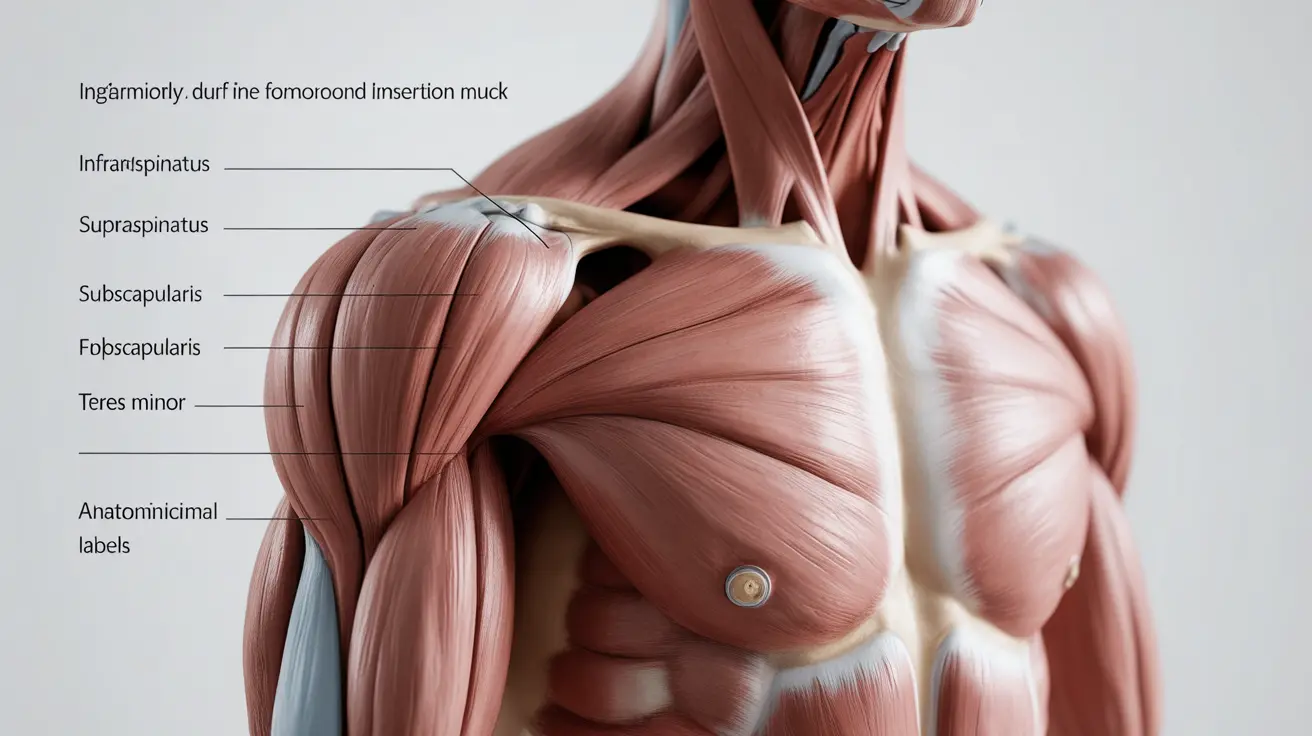Infraspinatus pain can significantly impact daily activities and quality of life, affecting the shoulder's range of motion and overall functionality. This common shoulder condition involves the infraspinatus muscle, a crucial component of the rotator cuff that helps with shoulder rotation and stability.
Understanding the causes, symptoms, and treatment options for infraspinatus pain is essential for proper management and prevention of long-term complications. Whether you're an athlete, office worker, or someone experiencing unexpected shoulder discomfort, knowing how to address this condition can help you maintain optimal shoulder health.
Understanding the Infraspinatus Muscle
The infraspinatus is one of the four rotator cuff muscles located in the shoulder blade area. It plays a vital role in shoulder movement, particularly in external rotation and stabilization of the shoulder joint. When this muscle becomes injured or strained, it can lead to significant pain and limited mobility.
Common Causes of Infraspinatus Pain
Several factors can contribute to infraspinatus pain and dysfunction:
- Repetitive overhead movements
- Sports activities (particularly throwing sports)
- Poor posture
- Traumatic injuries
- Overuse during work or exercise
- Age-related degeneration
Recognizing Symptoms
Identifying infraspinatus pain symptoms is crucial for early intervention and proper treatment. Common indicators include:
- Sharp or aching pain in the back of the shoulder
- Difficulty with external rotation movements
- Weakness when lifting or rotating the arm
- Pain that worsens with overhead activities
- Discomfort while sleeping on the affected side
- Reduced range of motion in the shoulder
Diagnosis Process
Healthcare providers typically use a combination of methods to diagnose infraspinatus pain:
- Physical examination
- Range of motion tests
- Strength assessments
- Imaging studies (MRI or ultrasound if necessary)
- Special orthopedic tests specific to rotator cuff evaluation
Treatment Approaches
Conservative Management
Initial treatment usually focuses on conservative measures:
- Rest and activity modification
- Ice therapy for acute pain
- Heat therapy for chronic conditions
- Anti-inflammatory medications
- Physical therapy exercises
- Proper posture correction
Physical Therapy Interventions
Physical therapy plays a crucial role in recovery and typically includes:
- Targeted stretching exercises
- Strengthening protocols
- Manual therapy techniques
- Posture education
- Movement pattern correction
Advanced Treatment Options
For persistent cases, additional treatments may be recommended:
- Corticosteroid injections
- Platelet-rich plasma therapy
- Ultrasound-guided procedures
- Surgery (in severe cases)
Prevention Strategies
Preventing infraspinatus pain involves several key strategies:
- Proper warm-up before activities
- Regular stretching routines
- Strength training for shoulder stability
- Ergonomic workplace modifications
- Proper technique in sports and exercise
- Regular breaks during repetitive activities
Frequently Asked Questions
What are the common causes and symptoms of infraspinatus pain?
Common causes include repetitive overhead movements, sports activities, and poor posture. Symptoms typically include sharp or aching pain in the back of the shoulder, difficulty with external rotation, and weakness during arm movements.
How is infraspinatus pain diagnosed by healthcare professionals?
Healthcare professionals diagnose infraspinatus pain through physical examination, range of motion tests, strength assessments, and sometimes imaging studies like MRI or ultrasound when necessary.
What treatments are effective for relieving infraspinatus muscle pain and injuries?
Effective treatments include rest, ice/heat therapy, physical therapy exercises, anti-inflammatory medications, and in some cases, corticosteroid injections or other advanced treatments.
Can repetitive overhead activities or sports cause infraspinatus pain or tears?
Yes, repetitive overhead activities and sports, especially throwing sports, can cause infraspinatus pain or tears due to overuse and strain on the muscle.
How can infraspinatus pain be prevented, especially in athletes and people with repetitive shoulder use?
Prevention strategies include proper warm-up, regular stretching, strength training, maintaining good posture, using correct technique during activities, and taking regular breaks during repetitive tasks.




